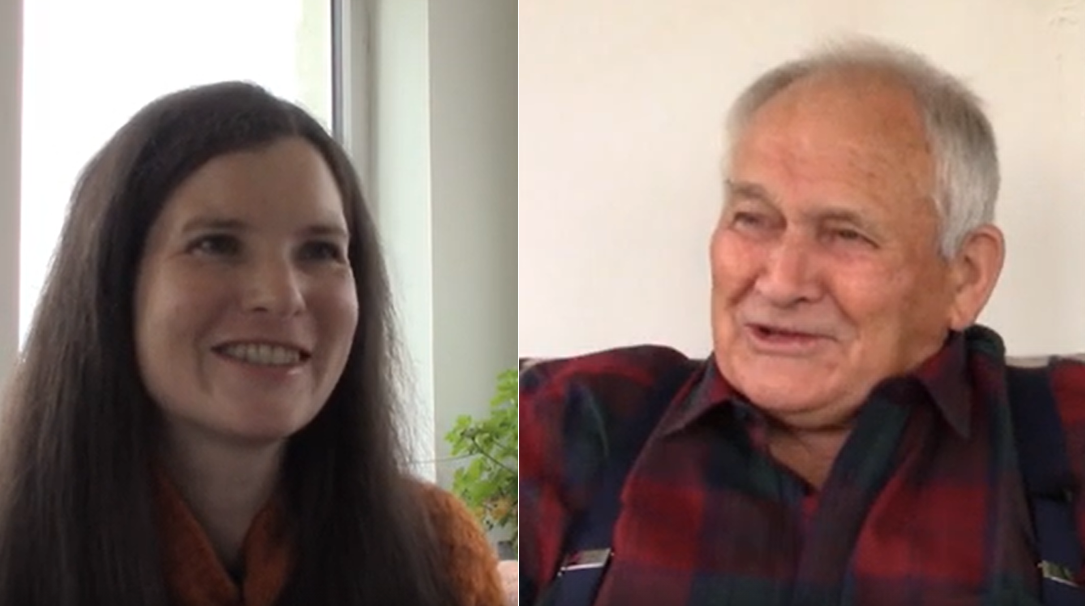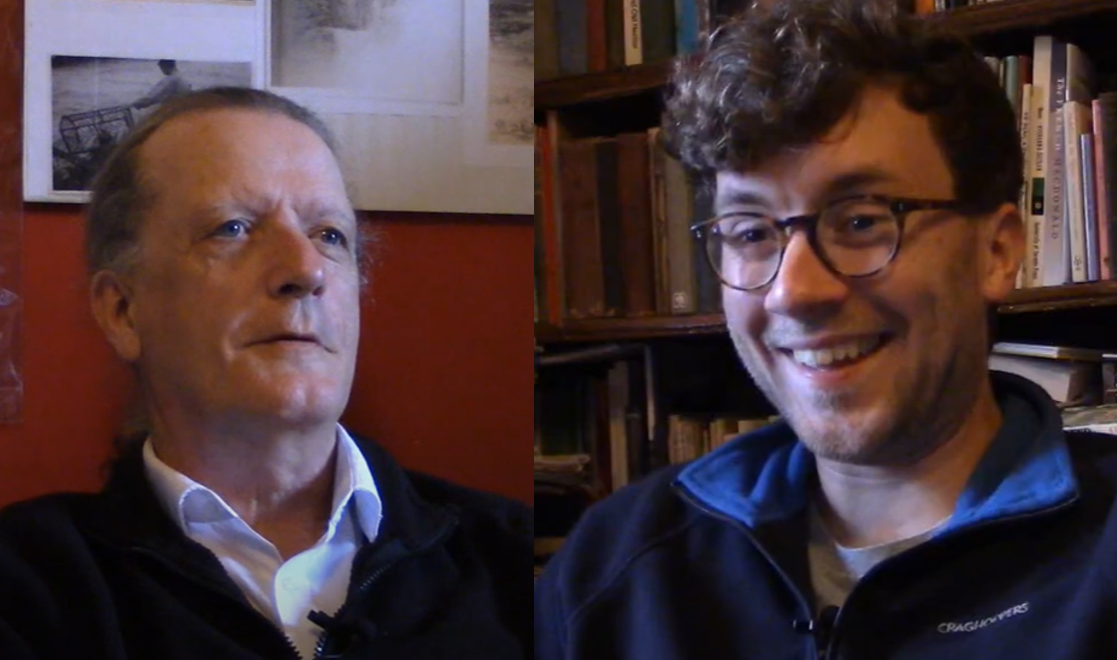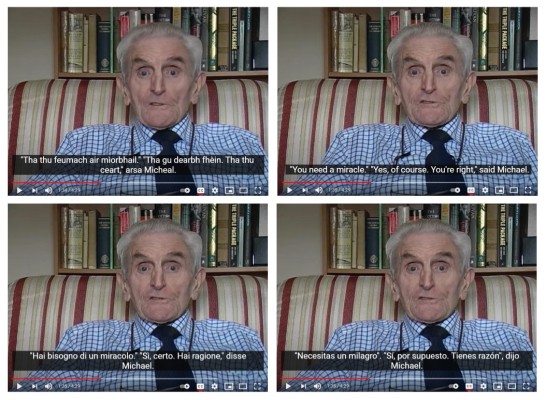Le Gordon Wells

Alasdair Macdonald talks to his daughter Kirsty. This follows on from the previous conversation Archie Campbell had with Alasdair for Stòras Beò nan Gàidheal.
This time Kirsty took charge of the kit and made the recording herself, capturing a fascinating father-daughter exchange in which more stories were re-told, many of them obviously old family favourites.
In this part, Alasdair recounts a number of tales recalled from his own childhood. Topics covered include hunting for rabbits, a near-drowning before the Baleshare causeway was built, youthful gun-handling, the making of seal oil, the use of horses for ploughing or to haul carts, and illicit fishing attempts with dynamite. These are followed by the recital of more traditional stories such as Cù Dubh Mhic a’ Phì (Àiridh na h-Aon Oidhche) and Isean Mhic Mhuirich.
A wordlinked transcript with embedded video is available on Clilstore via this link: https://multidict.net/cs/9723
In this part, Alasdair relates a story of fairy abduction to begin with, before hitting his stride with a series of anecdotes concerning local “characters” or family antecedents, including Iain Beag, Teàrlach Ruadh, Aonghas Ailean mhic Aonghaidh, and Ailean Heisgeir himself. From there the conversation moves onto deer-hunting escapades around Eaval (and how court appearances would not necessarily result in a poaching conviction), followed by discussion of grazing issues for both cattle and sheep. He finishes by describing traditional methods commonly used to make butter and cheese.
A wordlinked transcript with embedded video is available on Clilstore via this link: https://multidict.net/cs/9724
Tadhail air Island Voices – Guthan nan Eilean
Powered by WPeMatico

 Pàdruig Morrison
Pàdruig Morrison Independent Gaelic consultant
Independent Gaelic consultant  “Tionscadal píolótach a dhíríonn ar shamplaí cuí eiseamláireacha den chaoi a labhraítear an Ghaeilge agus a’ Ghàidhlig i bpobail Ghaelacha in Albain agus in Éirinn atá sa Taisce Ghaelach. Baintear leas as uirlisí soláimhsithe cláraithe agus teicnící furasta chun an t-ábhar a chruinniú.”
“Tionscadal píolótach a dhíríonn ar shamplaí cuí eiseamláireacha den chaoi a labhraítear an Ghaeilge agus a’ Ghàidhlig i bpobail Ghaelacha in Albain agus in Éirinn atá sa Taisce Ghaelach. Baintear leas as uirlisí soláimhsithe cláraithe agus teicnící furasta chun an t-ábhar a chruinniú.”

 Anne MacInnes, from Callanish on Lewis, talks to Maggie Smith about her family connections to the Breasclete community and school, where Gaelic Medium Education was pioneered.
Anne MacInnes, from Callanish on Lewis, talks to Maggie Smith about her family connections to the Breasclete community and school, where Gaelic Medium Education was pioneered. Calum Alasdair Fraser, from Tolastadh a’ Chaolais, talks to Maggie Smith about his family connections and upbringing on the west side of Lewis.
Calum Alasdair Fraser, from Tolastadh a’ Chaolais, talks to Maggie Smith about his family connections and upbringing on the west side of Lewis.
